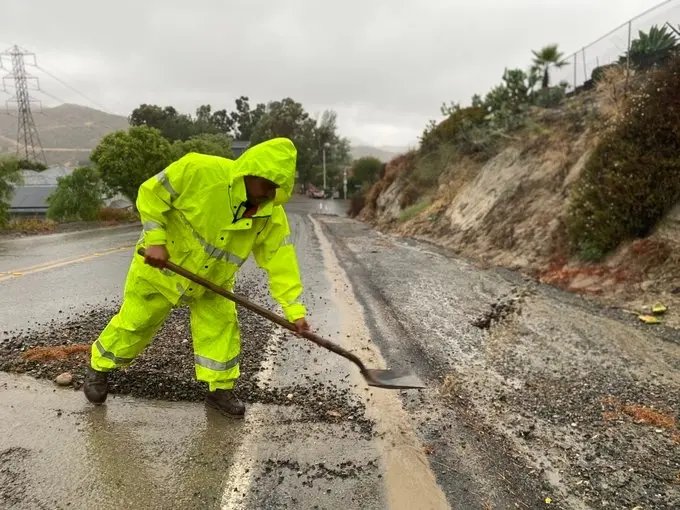Tropical Storm Hilary: Impact and Recovery in Orange County, CA
Tropical Storm Hilary recently swept through Southern California, bringing record rainfall and strong winds that led to widespread flooding and power outages. As the storm system moved northward, the rain began to taper off in Orange County, where cleanup operations were swiftly initiated to tackle the repercussions from this unprecedented weather event. Orange County Public Works reported minimal issues along flood control channels and roadways, with efforts focusing on clearing debris to ensure safe passage for residents.
Conditions Following the Storm
While the storm’s fury had largely subsided by Monday morning, the aftermath still posed challenges, particularly in areas most susceptible to flooding and mudslides. Voluntary evacuations had been lifted in the Silverado Canyon and Williams Canyon regions, especially in the wake of concerns surrounding the Bond Fire burn scar. Community collaboration was evident as city and county crews worked tirelessly to restore normalcy. The City of Laguna Beach shared an example of rapid response, noting a blocked drain addressed within 12 minutes. Such quick-thinking actions mitigate further water accumulation and potential damage.
Rainfall Records Shattered
Rainfall totals from the storm were startling, with some locations in Southern California, including Mount San Jacinto in Riverside County, experiencing over 11 inches of rain. For Orange County, figures ranged from 1.5 to 3.07 inches, with Coto de Caza recording the highest amount. These substantial rainfall totals not only created challenges but also set new records. In downtown Los Angeles, a notable 2.48 inches fell within a single day, marking a record for August rainfall. Given the volume of rain, the National Weather Service warned of potential flooding threats, particularly in Los Angeles and Ventura Counties.
Historical Significance of Tropical Storm Hilary
The magnitude of Tropical Storm Hilary cannot be understated; it resulted in the first tropical storm warning ever issued for Southern California. Such a warning had not occurred since 1939, signifying a monumental shift in historical weather patterns for the area. Before making landfall near San Diego, Hilary weakened from a hurricane but continued to pose risks, including flash flooding and landslides. Evacuations and emergency alerts were prominent as officials monitored the situation closely.
Emergency Response Efforts
In response to the storm’s potential dangers, California Governor Gavin Newsom declared a State of Emergency, activating Orange County’s Emergency Operations Center at Level 2 to better coordinate resource allocations. Support from FEMA was also mobilized, with pre-positioned supplies and an Incident Management Assistance Team ready for on-the-ground assistance. The California National Guard deployed resources strategically in anticipation of the storm’s impacts, showcasing a well-coordinated emergency response to ensure safety and recovery for residents.
Earthquake Adds to the Turmoil
Adding to the confusion and volatility of the weekend, a magnitude 5.1 earthquake struck Ventura County just as Hilary was making its presence known, further complicating recovery efforts. While the tremor and its aftershocks did not lead to reported injuries or damage, they contributed to the overall chaos. As the storm dissipated and the ground settled, officials encouraged Orange County residents to stay alert and prepared for any future incidents. Sign-ups for AlertOC were recommended to keep the community informed.
The Path Forward
While many areas in Orange County faced the immediate aftermath of Tropical Storm Hilary, locals can feel assured knowing that recovery operations are underway. The collaborative spirit among local agencies, emergency responders, and community members forms the backbone of resilience in the face of natural disasters. As more information becomes available, officials continue to prioritize safety while planning for future events.
For ongoing updates and to stay connected to local efforts in recovery and safety measures, follow news outlets such as Patch and stay in touch with local government communications.





